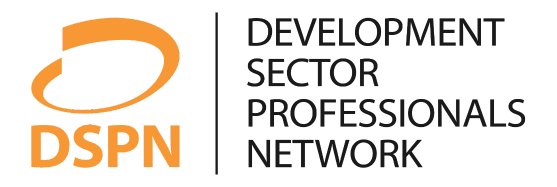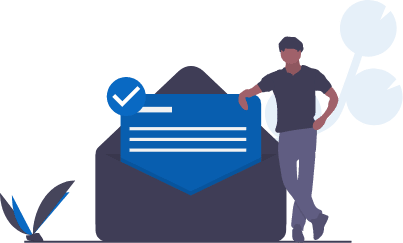A well-crafted resume and cover letter are essential tools in securing job interviews. They serve as your first impression to potential employers and can determine whether you move forward in the hiring process. A strong application should clearly communicate your skills, experience, and professional value while aligning with the job description. In this session of “Rethinking Careers in the Development Sector” series, we discussed creating a compelling resume and cover letter that will help you stand out to recruiters and hiring managers.
THE RESUME: MORE THAN JUST A DOCUMENT
Your resume is a personal marketing tool. It should present a clear, concise, and compelling narrative of your qualifications and achievements. A well-structured resume helps recruiters quickly identify why you are a suitable candidate for the role.
Key Components of a Strong Resume:
- The Header: Essential Information
The top section of your resume should contain only relevant and up-to-date contact details, including:
- Full Name: Ensure the name used on your resume matches official documents and professional profiles.
- Phone Number: Provide a number where you can be easily reached. Double-check for accuracy.
- Professional Email Address: Use an email address that includes your name, avoiding unprofessional handles.
- Location: Include your city and country, but avoid listing your full home address for privacy reasons.
- LinkedIn Profile: A well-optimized LinkedIn profile can enhance your credibility and make it easier for recruiters to learn more about your experience.
What to Exclude from the header;
- Date of Birth: Unless explicitly required for a role, including your birth date may introduce unintended biases.
- Gender and Marital Status: These details are rarely relevant to job applications.
- Full Home Address: For security and privacy reasons, stating your city and country is sufficient.
2. Professional Summary: Your Elevator Pitch
The professional summary, located at the top of your resume, is a brief statement that provides a snapshot of your career background, skills, and key accomplishments. A strong professional summary should quickly communicate why you are an ideal fit for the position and encourage the recruiter to read further.
- Write in the third person rather than using “I” statements.
- Keep it concise and targeted (three to five sentences).
- Highlight your most relevant skills, years of experience, and industry expertise.
- Emphasize what makes you a valuable candidate for the role.
3. Work Experience: Focusing on Achievements Over Tasks
Many job seekers make the mistake of listing job descriptions instead of emphasizing achievements. Your work experience should not merely describe what you were responsible for but demonstrate the impact you made in each role.
Instead of writing:
- Managed a team of data analysts and prepared reports for senior management.
Reframe it to show achievement:
- Led a team of five data analysts to develop automated reporting processes, reducing manual reporting time by 40% and increasing data accuracy across three departments.
Best Practices for Writing Work Experience
- Use Action Verbs: Words like “spearheaded,” “developed,” “optimized,” and “implemented” create a stronger impact.
- Quantify Achievements: Use numbers to highlight measurable outcomes where possible, such as percentage increases, revenue growth, cost reductions, or process improvements.
- Keep Descriptions Concise: Each bullet point should be clear, direct, and relevant to the role you are applying for.
- Prioritize Relevant Experience: If you have extensive experience, focus on roles and accomplishments that align with the job’s requirements.
4. Education & Certifications
Education should be listed in reverse chronological order, meaning your most recent degree or certification appears first. For each qualification, include: degree or certification earned, institution name and year of completion. For professional roles, formal education should be complemented by certifications, workshops, and specialized training that align with your career path. If applying for academic or research-based roles, additional details such as publications, thesis work, and conference presentations may be necessary.
5. Skills & Technical Competencies
Your skills section should be tailored to the job description, focusing on both technical and soft skills relevant to the role.
- Hard Skills: These are measurable abilities like data analysis, programming, project management, or proficiency in tools like Microsoft Excel, SQL, or SPSS.
- Soft Skills: These include leadership, problem-solving, teamwork, and communication, which are often crucial for career success.
- Industry-Specific Keywords: Many recruiters use Applicant Tracking Systems (ATS) that scan resumes for keywords related to the job. Review the job description carefully and incorporate relevant terms.
Common Resume Mistakes to Avoid
- Using Generic, One-Size-Fits-All Resumes: Always tailor your resume to match the specific job you are applying for.
- Providing Too Much Information: Keep it concise and focus on relevance.
- Neglecting Formatting & Readability: Avoid dense paragraphs; use bullet points and clear section headers.
- Failing to Optimize for ATS: Use standard fonts (Arial, Calibri, Times New Roman), avoid tables or graphics, and submit resumes in Word format instead of PDFs when required.
- Ignoring Proofreading: Typos and grammatical errors can make a poor impression. Review your resume multiple times before submitting.
Cover Letters: Do You Still Need One?
While not always required, a well-written cover letter can strengthen your application. It provides context for your resume and allows you to showcase enthusiasm for the role. A personalized, well-structured cover letter can differentiate you from other candidates and provide additional insights into your qualifications.
Key Elements of a Strong Cover Letter
- Introduction: Clearly state the position you are applying for and briefly introduce yourself.
- Body: Highlight key skills and experiences that make you a strong fit for the role. Use specific examples to demonstrate how you can contribute to the company.
- Conclusion: Express enthusiasm, confidence, and a call to action, such as a request for an interview.
Optimizing Your Digital Presence
Many recruiters review a candidate’s LinkedIn profile and online presence before making a hiring decision. Ensure that your LinkedIn profile aligns with your resume and reflects your professional achievements.
- Use a professional profile photo and write a clear, compelling headline that summarizes your expertise.
- Keep your experience and accomplishments updated to match your resume.
- Engage with industry-related content by sharing posts, commenting, and networking with professionals in your field.
Importantly, be mindful of what you post on social media platforms. Inappropriate content or strong political and controversial opinions can negatively impact your professional image.
Taking Control of Your Job Search
A structured and strategic approach to job applications can significantly improve your chances of landing interviews.
- Be intentional: Focus on applying for roles that align with your expertise and experience.
- Customize each application: Tailor your resume and cover letter for every job.
- Network effectively: Engage with professionals and recruiters on LinkedIn and other platforms.
- Stay organized: Keep track of your applications and follow up when necessary.
- Commit to continuous improvement: Regularly update your resume, acquire new skills, and stay informed about industry trends.
In the next part of this series, we will explore:
- Advanced resume writing techniques
- How to leverage AI for job applications
- Mock interview strategies and preparation tips




6 Comments
Moses Chidi Edeji Author
This is quite informative.
Thank you for sharing.
Esther Anulika Author
Thanks so much, it has a lot of eye opener
Aliyah Madden Author
I really like reading through a post that can make men and women think. Also, thank you for allowing me to comment!
Digital detox for productivity Author
Very clean and intuitive.
Salvador Edwards Author
I appreciate you sharing this blog post. Thanks Again. Cool.
Hip Hop Author
I’m so pleased I came across your site today! This particular post was captivating from start to finish. I’ve already shared it with several contacts who I know will benefit from it.